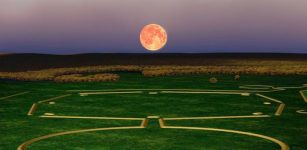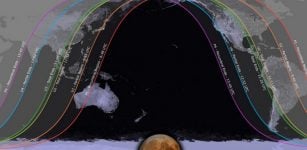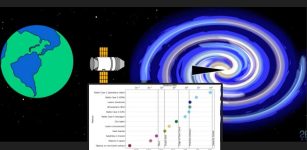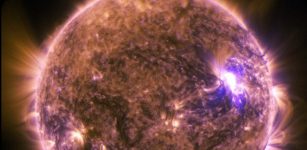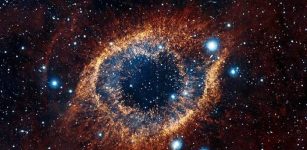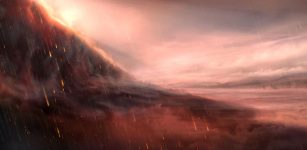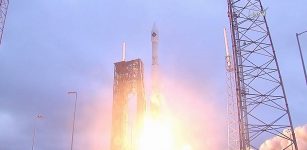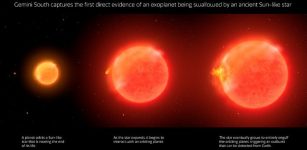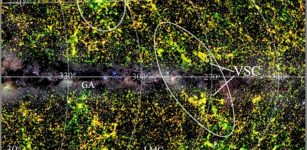A Stunning And Unexpected Cluster Of Galaxies In the Process Of Formation – Found
Eddie Gonzales Jr. – MessageToEagle.com – Astronomers – using NASA’s Webb Space Telescope – revealed a surprising discovery in the form of a cluster of galaxies in the process of formation.
A team under the lead of Dominika Wylezalek (ZAH/ARI) was observing quasars, when they discovered one of the densest known areas of galaxy formation in the early Universe.
A Hubble image of the quasar and the same area viewed with the James Webb Space Telescope. The Webb image shows multiple galaxies coalescing, with each color representing a different velocity: Red is moving away from us. Blue is moving toward us. Credit: ESA/Webb, NASA & CSA, D. Wylezalek, A. Vayner & the Q3D Team, N. Zakamska
Quasars are incredibly luminous cores of galaxies. Their brightness is powered by supermassive black holes sitting in their cores, causing a “galactic wind”, i.e. pushing gas out of the host galaxy and thereby influencing local star formation.
The quasar in question, known as SDSS J165202.64+172852.3 at a redshift of z=2.94, exists in the very early Universe, 11.5 billion years ago. In addition to its striking red color, the galaxy’s light has been further shifted to the infrared by its huge distance and the expansion of the Universe. Therefore, the James Webb Space Telescope (JWST) with its outstanding infrared observing capabilities and imaging resolution was the ideal instrument to study in detail what’s going on in this particular galaxy.
Previous studies already called attention to the quasar’s powerful outflows, and astronomers had speculated that its host galaxy merging with some unseen partner could actually be the cause for this activity. And indeed, Webb’s recent observations clearly indicated that not only one galaxy, but at least three more are swirling around in an extreme dense knot of galaxy formation.
“There are few galaxy protoclusters known at this early time. It’s hard to find them, and very few have had time to form since the Big Bang,” said astronomer Dominika Wylezalek of Center for Astronomy of Heidelberg University, who led the study into this quasar. “This may eventually help us understand how galaxies in dense environments evolve… It’s an exciting result.”
The team suspects they could have been looking at the core of a cluster of galaxies revealed by Webb’s superb imaging and spectroscopic capability. This enabled them to map the motions of detectable objects, resulting in the conclusion that SDSS J165202.64+172852.3 was in fact part of a dense knot of galaxy formation.
Taking into account the speed at which three confirmed galaxies are orbiting and how closely they are packed into the region around the quasar, the team believes this marks one of the densest known areas of galaxy formation in the early Universe known so far. “Even a dense knot of dark matter isn’t sufficient to explain it,” Wylezalek says. “We think we could be seeing a region where two massive halos of dark matter are merging together.”
Written by Eddie Gonzales Jr. – MessageToEagle.com Staff


